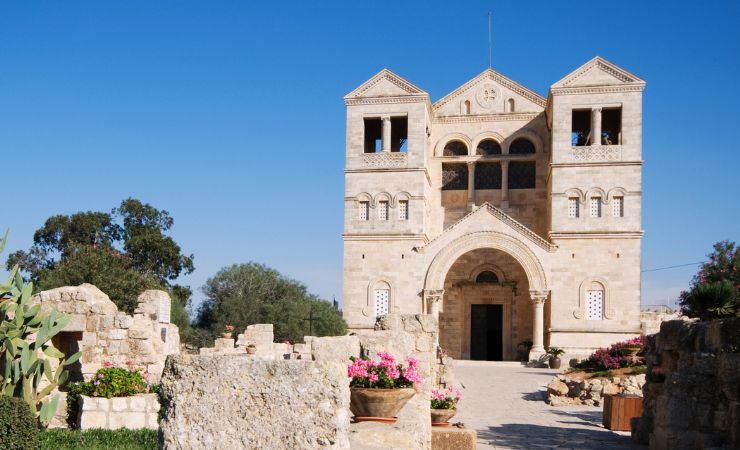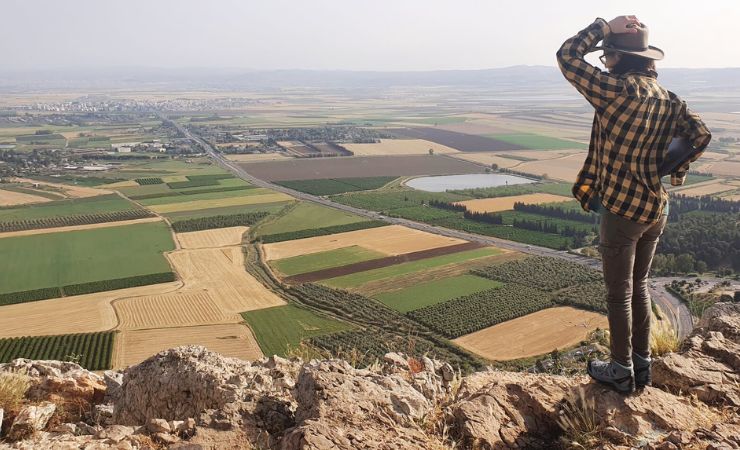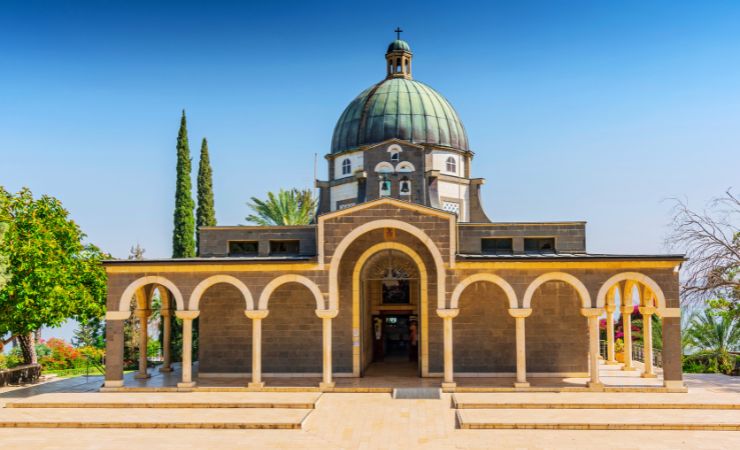Hazor: Walking Through the Pages of Biblical History
Hazor (Tel Hazor National Park) is a UNESCO World Heritage site that has a rich history and is mentioned many times in the Bible. At Hazor where every stone has a story to tell, where every path leads you to a secret waiting to be unveiled.
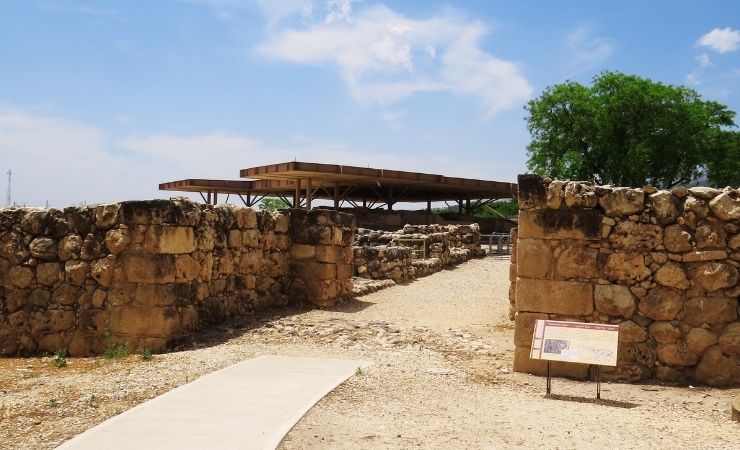
Where is Hazor Located?
The National Park Tel Hazor is located at the southern Hula Valley, west of Kibbutz Ayelet HaShahar. It is located in a land that once dominated the road from Egypt to Mesopotamia.
Biblical context
The city finds prominent mentions in the Bible. In the Book of Joshua Hazor is portrayed as a dominant city-state, illustrating its downfall at the hands of Joshua and the Israelite army.
In Judges 4:2, the Bible tells us about the reign of “Jabin king of Canaan, who reigned in Hazor. Sisera, the commander of his army, was based in Harosheth Haggoyim.” This sets the stage for the story of Deborah, a prophetess, and judge of Israel, who leads the Israelites against Jabin’s forces, narrating tales of courage and triumph.
In 1 Kings, Hazor is mentioned in the context of Solomon’s building projects. It unveils Hazor’s restoration and fortification during Solomon’s reign, showcasing the city’s strategic importance in controlling the ancient trade routes. The verse states:
Here is the account of the forced labor King Solomon conscripted to build the Lord’s temple, his own palace, the terraces, the wall of Jerusalem, and Hazor, Megiddo, and Gezer.



Archeological Findings at Hazor
The Religious Complexes at Hazor
Bronze Age Religious Complexes
During the Bronze Age, Hazor was home to significant religious complexes that played a central role in the spiritual life of its inhabitants. The city covered an area of approximately 84 hectares, encompassing both a lower city and an acropolis (upper city). The heart of the religious activities was situated in the central part of the city, which housed a large ceremonial precinct consisting of a building and two courtyards. This precinct was adjacent to an administrative palace located on the northern slope of the area.
The ceremonial precinct was a focal point for religious activities, where various ceremonies and rituals would take place. It was a space that reflected the city’s importance, showcasing its connections and correspondence with neighboring regions as well as the Egyptian empire in the south.
Late Bronze Age Discoveries
Excavations of the Late Bronze Age stratum (15th–13th centuries BCE) have revealed palaces, temples, gates, and domestic buildings throughout the city. The structures were meticulously designed, showcasing the rich cultural tapestry of Hazor.
Destruction and Debate
The Late Bronze Age city met a tragic end, evidenced by a thick destruction layer that includes burnt mudbricks, burnt wooden beams, broken pottery vessels, and other finds. This layer, measuring 2-3 meters, bears witness to a large conflagration that engulfed the city. The exact cause of this destruction remains a matter of scholarly debate, with theories ranging from an attack by proto-Israelites to internal strife leading to the city dwellers themselves causing the destruction.
The religious complexes at Hazor offer a rich insight into the spiritual life of the ancient inhabitants of the city. Here are the details:
Bronze Age Religious Complexes
During the Bronze Age, Hazor was home to significant religious complexes that played a central role in the spiritual life of its inhabitants. The city covered an area of approximately 84 hectares, encompassing both a lower city and an acropolis (upper city). The heart of the religious activities was situated in the central part of the city, which housed a large ceremonial precinct consisting of a building and two courtyards. This precinct was adjacent to an administrative palace located on the northern slope of the area.
The ceremonial precinct was a focal point for religious activities, where various ceremonies and rituals would take place. It was a space that reflected the city’s importance, showcasing its connections and correspondence with neighboring regions as well as the Egyptian empire in the south.
Late Bronze Age Discoveries
Excavations of the Late Bronze Age stratum (15th–13th centuries BCE) have revealed palaces, temples, gates, and domestic buildings throughout the city. The religious complexes from this period offer a glimpse into the spiritual practices and architectural grandeur of the time. The structures were meticulously designed, showcasing the rich cultural tapestry of Hazor.
Destruction and Debate
The Late Bronze Age city met a tragic end, evidenced by a thick destruction layer that includes burnt mudbricks, burnt wooden beams, broken pottery vessels, and other finds. This layer, measuring 2-3 meters, bears witness to a large conflagration that engulfed the city. The exact cause of this destruction remains a matter of scholarly debate, with theories ranging from an attack by proto-Israelites to internal strife leading to the city dwellers themselves causing the destruction.
Iron Age Resettlement
Following a gap of about 150 years, the acropolis was resettled during the Iron Age, marking the beginning of a new chapter in Hazor’s history. However, the lower city remained abandoned. The new settlement was relatively sparse, with meager walls and numerous pits dug into the destruction layer of the previous city. This period saw a shift in religious practices, reflecting the changing dynamics of the region.
Following a gap of about 150 years, the acropolis was resettled during the Iron Age, marking the beginning of a new chapter in Hazor’s history. However, the lower city remained abandoned. The new settlement was relatively sparse, with meager walls and numerous pits dug into the destruction layer of the previous city. This period saw a shift in religious practices, reflecting the changing dynamics of the region.
The Canaanite Palace
The Canaanite Palace at Hazor is a remarkable structure that stands as a testament to the grandeur of the ancient city during the Canaanite period. The ruins of the Canaanite palace are situated in the upper city of Hazor. The remnants of this ancient structure is sheltered by a roof to prevent wear and further deterioration.
Historical Context: The palace served as the royal residence for the kings of Hazor during the 14th to 13th centuries BCE. It was a period when Hazor was a significant city, having substantial influence and affluence.
Architectural Highlights:
- Entrance: As you approach the palace, you are greeted by a monumental entrance adorned with two giant basalt pillars, leading to a grand staircase that takes you to the heart of the palace.
- Ritual Dais: Within the palace, a ritual dais has been uncovered, indicating the spiritual or ceremonial practices that likely took place in this royal residence.
- Throne Room: The central part of the palace houses a throne room, a space where the king would have held court, overseeing the affairs of the state and entertaining dignitaries.
Artifacts and Finds: The palace has yielded significant archaeological finds that offer a glimpse into the life and times of the Canaanite period.
Connection to Other Structures: The palace is in close proximity to other significant structures, including Solomon’s gate and an intricate water system described below, showcasing the well-planned layout of the ancient city.
The Water System
The water system at Hazor is indeed one of the standout features of the site, showcasing the remarkable engineering prowess of the ancient inhabitants. The construction of this water system is attributed to the time of King Ahab. It was designed to supply the local residents with water even in times of drought, without having to rely on the springs outside the city. The system is divided into three main parts:
- Access Structure: Built with large ashlar blocks, this structure marks the beginning of the journey into the water system.
- Vertical Shaft: This is a remarkable feat of engineering where a shaft has been excavated through the ancient layers of the mound down to the bedrock. The shaft, which is 45 meters deep, has 3-meter wide steps carved out along its walls, facilitating access to the water source.
- Tunnel: At the end of the shaft, a 25-meter tunnel begins, sloping diagonally downwards to reach the water-bearing deposits. This tunnel ensured that the residents could access water even during times of drought, without having to venture outside the city walls.
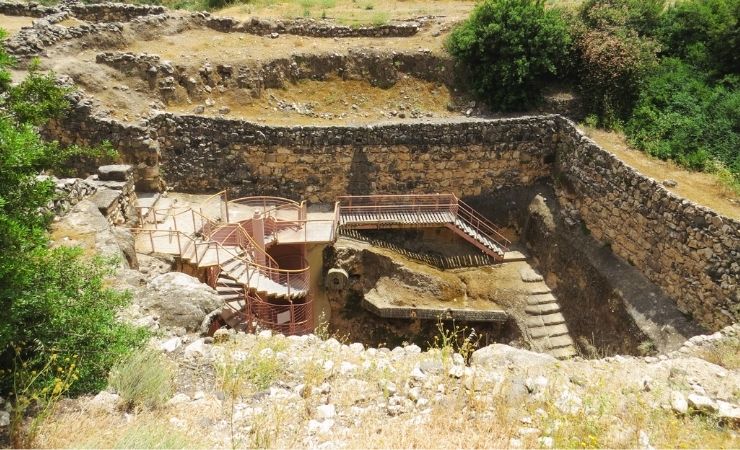
Sources and Additional Reading
Hazor – The Torah.com
Hazor Excavations
Nearby Sites
Capernaum: Often referred to as “Jesus’ own city”. It’s renowned for its ancient synagogue and the house of Peter. At Capernaum you can find the Orthodox Church of the Twelve Apostles.
The Church of the Multiplication: Located in Tabgha, this church is believed to be the site where Jesus multiplied the loaves and fishes.
The Church of Beatitudes: Designed by Antonio Barluzzi, this church commemorates the location where Jesus is believed to have delivered the Sermon on the Mount.
Domus Galilaeae: This Christian retreat center offers stunning views of the Sea of Galilee. It’s a place of reflection and spiritual renewal.
Rosh Pina: A picturesque town known for its beautifully restored historic buildings, art galleries, and boutique hotels. It offers a blend of history, culture, and modernity.

